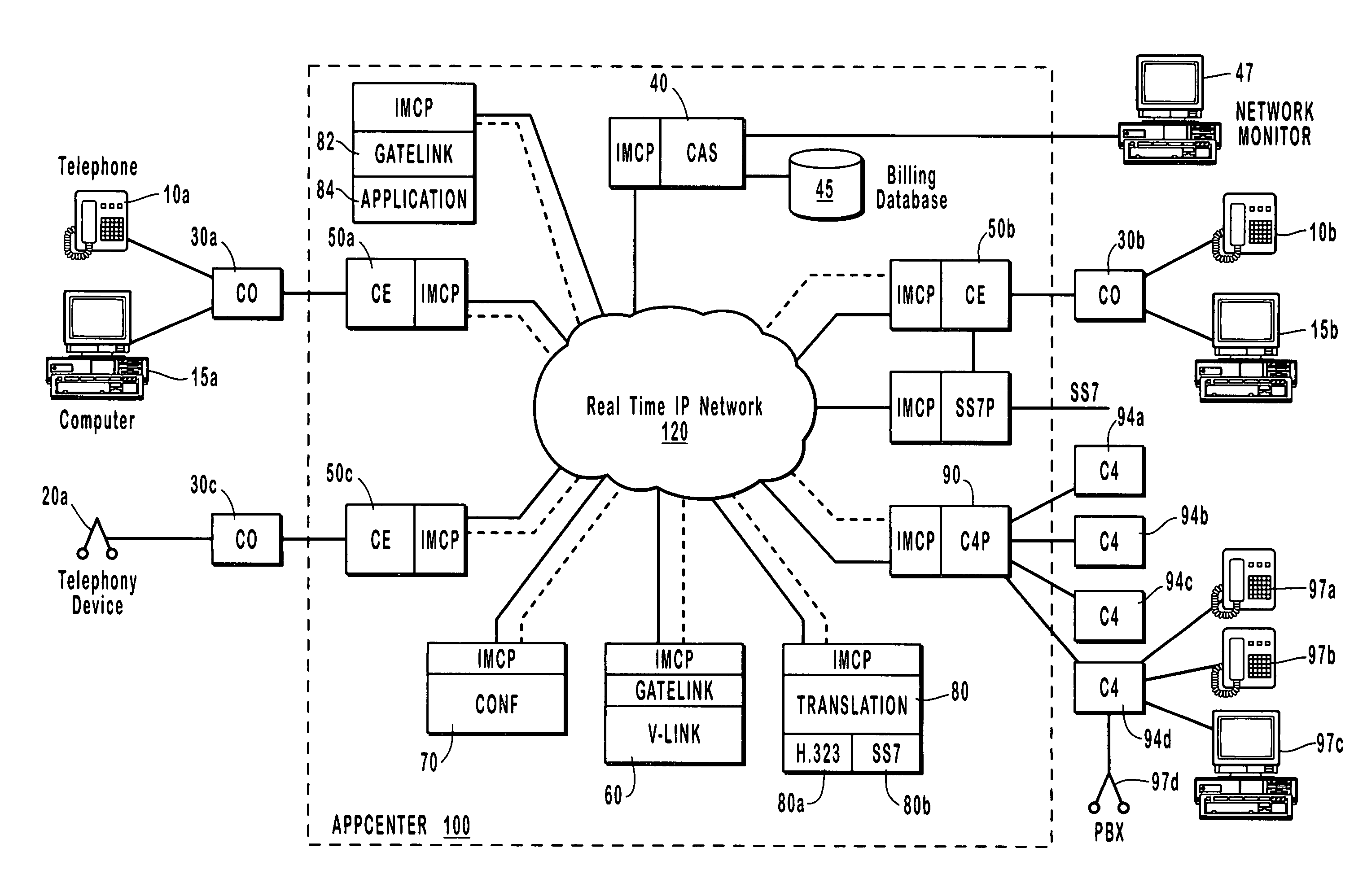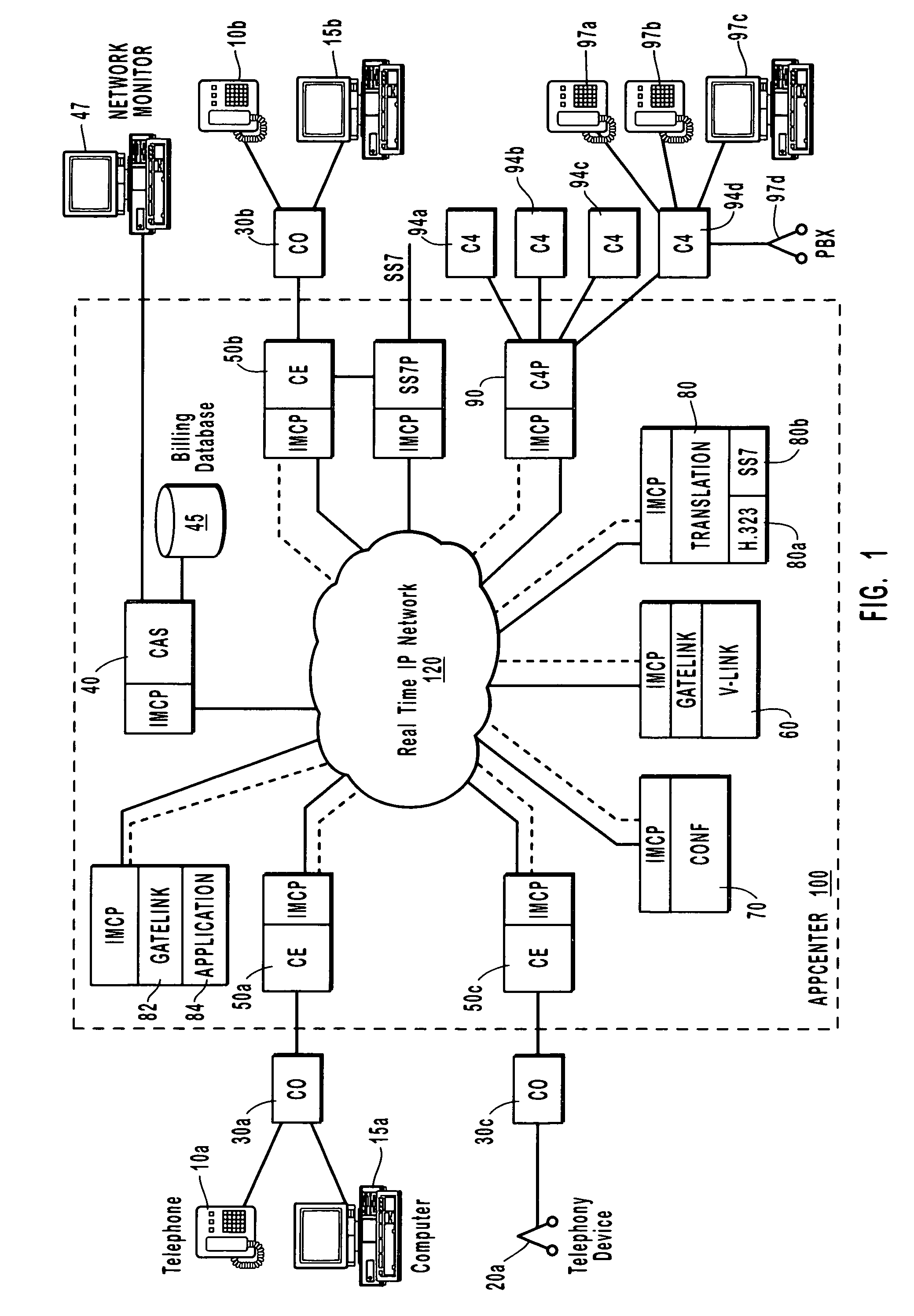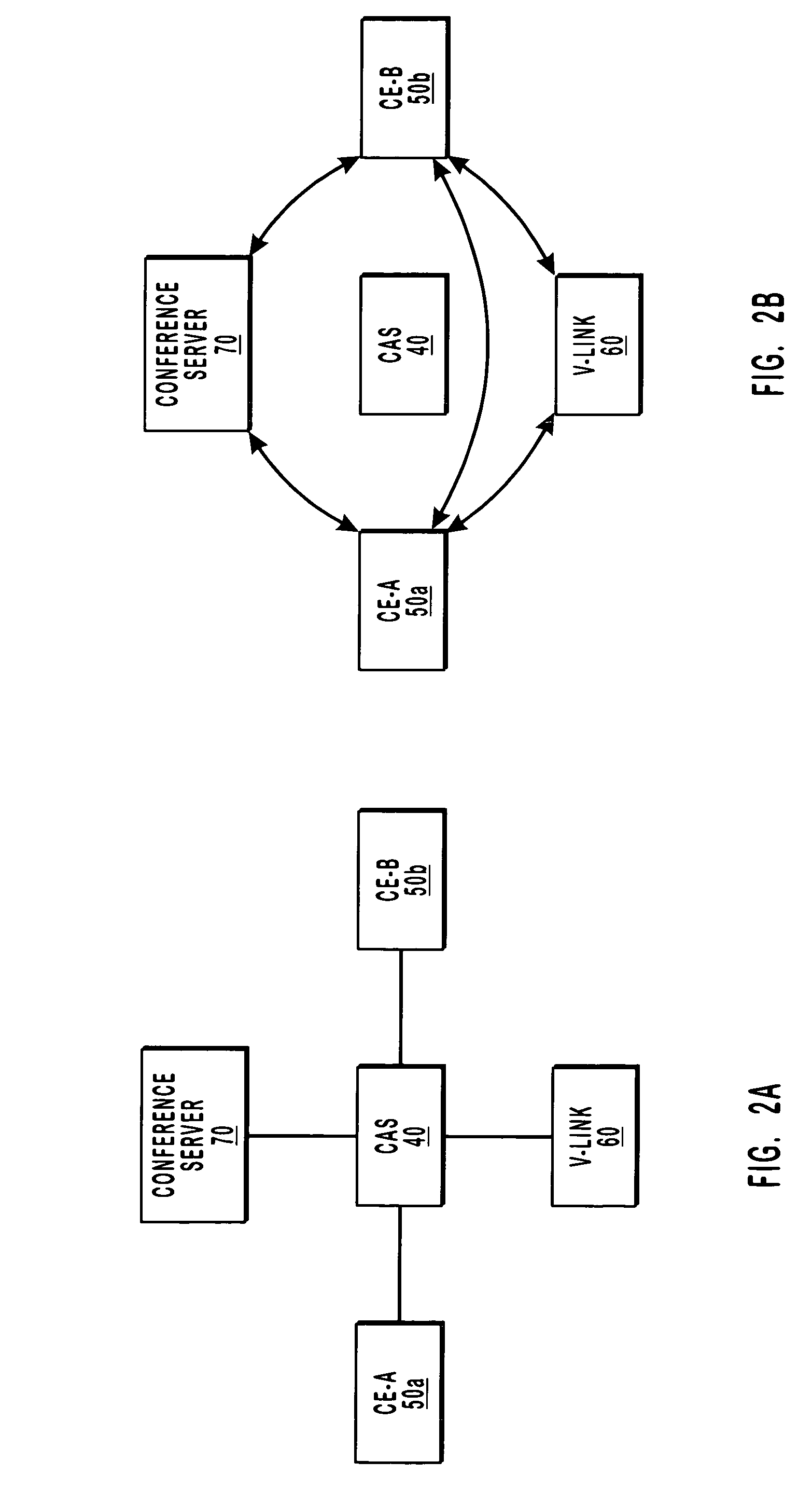[0015]One
advantage of the present invention is to provide a protocol and
network architecture that allows communication between new and legacy components via a translation interface module.
[0016]Another
advantage of the present invention is to provide a user with a variety of message types that can be optimized according to the type of data being sent, such as voice, video, or data. The distributed
network architecture also allows for the creation of a large fault tolerant
system that does not incur the performance and
operational costs and complexities associated with building a large
monolithic system. Much like the differences between Mainframe and
local area network (LAN) computer environments. In the distributed
network architecture, transmitted data is identified and optimized by
pooling data into categorized data packet types allowing decisions to be made on how this data should be handled and exchanged between servers along the various network types, such as a real time packetized network or PSTN network, available to the user. Yet another
advantage of the present invention is the natural
command and control infrastructure supplied by the packetized network based architecture, namely, enhanced
connectivity and
scalability for attached communication devices in a
carrier grade network. While a packetized network does not guarantee that all the advantages of an IP network will be available by default, ATM is an example. The present invention utilizes the packetized network and IP protocol to provide the ability address other devices without knowing where the device is or how to get to it. Thereby separating network from application. The advantage of the
system we are describing is that this feature of IP networks has been sustained throughout the architecture.
[0017]In summary, the foregoing and other objects, advantages and features are achieved with an improved communication network for use in connecting
multimedia devices, such as video, voice, data, other
telephony devices, and the like to remote access points and associated communication devices attached to those points, such as modems, telephones, video displays, and
network interface cards (NICs). Embodiments of the present invention are particularly suitable for use with such
telephony devices that are used in a typical local exchange having one or more jacks or sockets designed to accommodate communication devices. For example, a telephone having an RJ type connector that is inserted into the socket or jack in such a way that the telephone is in communication with the network and may selectively dial a second
telephony device via the network.
[0018]In a preferred embodiment, the communication network maintains three
layers for each connection, more specifically a
physical layer, a
network layer, and a
service layer. The
physical layer is created via the existing IP network, such as
the Internet, a
private IP network, real time IP network, or combination thereof. A
network layer generates a connection that is logically assigned via participating network devices, and finally a
service layer generates logical connections necessary to run the desired application. By creating three independent
layers the communication network is given the advantages of a distributed network along with the advantages of component specialization and optimization associated with the physical, logical, and service
layers. In designing the components of this new communication network, the present invention employs, but is not limited to, elements from Q.931 and SS7 as a basis for
call control. A structured,
scalable architecture is provided through the defined components and their responsibility.
[0019]The
network layer comprises at least one central arbitration
server (CAS) or gatekeeper, at least one communications engine (CE) or gateway, where both devices are running
the Internet Media Control Protocol (IMCP). The CAS is a fault tolerant set of servers that act as gatekeepers on the network. The CAS is responsible for arbitrating
resource allocation, passing
call control information and collecting billing records. The CE is the network implementation of a voice-over IP (VoIP) gateway. This gateway is built to use the IMCP protocol to take part in the
private communication network. The network CE can
handle both customer based signaling, such as ISDN-PRI, and carrier signaling, such as SS7. One example of an additional network layer device is a NetLink-IP device (C4). The C4 provides network users with multiple phone lines and a persistent or continuous Internet connection over a single
data connection.
[0020]The
service layer includes V-Link platform and services and the GateLink API layer. The service layer brings intelligence to the network. V-Link is an example of a VoIP based
enhanced service. The network GateLink API offers access to the communication network to
third party software developers. The API gives a
software abstraction to all the resources on the network. Thereby enabling the creation of application modules, such as a voice portal, a unified
message service, and
automatic call distribution (ACD) service.
 Login to View More
Login to View More  Login to View More
Login to View More 


